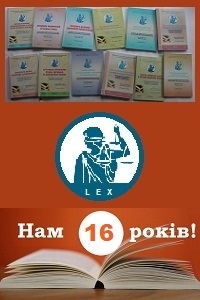1875–1940 – the period when Bukovyna was under the jurisdiction of two states: Austria-Hungary (1875–1918) and Romania (1918–1940). This was vividly reflected in all spheres of social life, including the development of state (constitutional) law as a science and an academic discipline at the Faculty of Law of Chernivtsi University.
The establishment of the university in Chernivtsi in 1875 opened up the possibility of training qualified lawyers to meet the needs of the region in the personnel of administrative institutions, courts, prosecutor's office, advocacy, and notary.
Initially, admission to the university, organization of the educational process, tuition fees, training of legal personnel in Chernivtsi were regulated by all-Austrian legal acts.
In 1899, the academic senate of Chernivtsi University issued a collection of laws and regulations on issues of university life. According to the aforementioned order, studies at the Faculty of Law lasted four years and were paid. We had to pay for admission, for taking and retaking exams, for participation in some seminars.
The entire period of study was divided into three groups of sciences: history of law, political science, and judiciary [2, p. 302]. For each group, the educational load included both compulsory and additional subjects. Austrian public law was compulsory only for students of the second study group.
The teaching was mainly lecture-based. So, for example, in the 1894–1895 academic year, Austrian state law was read 5 hours a week. Later, law and political science seminars were created at the faculty. Seminars were divided into departments. The political science seminar included the department of public law and administration. For a long time, the work of this seminar was supervised by F. Kleinwechter [3, p. 7]. Oral presentations, discussions, conversations, debates, as well as written works were practiced at seminar classes, the best of which were awarded seminar prizes.
The teaching of Austrian state law in different years was provided by highly qualified teachers and scientists. Among them: Johann Weissmann (1875–1877), Johann Barek (1877–1884), Joseph Cryspin (1884–1899), Franz Lunz (1900), Franz Hauke (1889–1904), Joseph Lucas (1904–1908), Karl Lamp (1908–1911), Hans Ritter von Frisch (1912), Otto Freiberr von Dungern (1911–1916) and Leonidas Pitamich (1918–1919).
The most prominent political scientist was Professor F. Hauke. Several thorough studies and several reports on constitutional and administrative law belong to his pen. These are, first of all, «Historical foundations of monarchical law: a contribution to the development of Austrian constitutional law», «University representation in the Landtags: a proposal to supplement the existing legislation», «Collection of cases and questions on constitutional and administrative law». His inaugural speech «On Some Questions of Parliamentary Law», delivered on December 1, 1900, received favorable reviews in the Austrian legal world.
In the Austrian period of its history, the Faculty of Law had the authority to award the academic degree of Doctor of Laws. Among such graduates from the faculty was the future famous constitutional scientist Julius Hachek. His scientific legacy consists of works on English, German and Prussian state and administrative law, the theory of self-government, and the history of justice in Halicia and Bukovyna.
After the accession of Bukovyna to Romania in 1918, the Romanianization of Chernivtsi University took place, and since 1922, the training of specialists took place according to a two-stage system. The first stage of education, the term of which could not be less than three years, is the license, and the second stage – two years – the doctorate [8, art. 16]. These terms were unchanged for quite a long time, only since 1933 the term of study for licentiates increased by one year, that is, to 4 years, and since 1937, the study of doctorates decreased to 1 year.
The constitutional law of Romania was mandatory for students of the first year of the license [7, art. 7]. However, with the introduction of a four-year term of study in 1933, the program of study courses for licentiates changed somewhat and the mentioned course was taught to students already in the second year of study. Doctorate courses were divided into two sections: legal and political and economic. Both sections studied comparative constitutional law.
As in the Austrian period of the history of the Faculty of Law, teaching was mostly conducted in lecture form. However, since 1929, seminar classes have entered into practice, but only since 1937, seminar classes on the constitutional law of Romania began to be held. Seminars were held for 1–2 hours per week if the number of students was less than 30, and twice for 1–2 hours per week if the number of students exceeded 30. Subsequently, the division of students into subgroups for conducting seminar classes was practiced. Thus, in the 1937–1938 academic year, the constitutional law of Romania was studied 3 hours a week in lectures and 2 hours in seminars. In the same year, 3 hours of lectures and 1 hour of seminar classes per week were also devoted to comparative constitutional law.
Lectures and seminars were provided by highly qualified teachers. Among them, it is worth highlighting George Alexianu, Trajan Ionashku, Constantin Petrescu-Ercia and Constantin Berariu. Each of them was a prominent scientist and gifted teacher. They were also known among the Bukovyna population, reading the so-called «Promotion Courses». For example, in the 1924–1925 academic year, at the Popularization Courses, T. Ionashku gave a lecture on «Politics of Unification of Legislation» (2 hours) and K. Petrescu-Ercia – «Legislative Power in the Legislation of Different States» (1 hour). C. Berariu developed the lecture course «Constitutional Law» for students of the faculty [5, p. 9].
Special attention should be paid to G. Alexianu, who started working at the Faculty of Law of Chernivtsi University on October 1, 1926. In April 1927, he took the position of professor of the Department of Constitutional Comparative Law at Chernivtsi University [4, p. 149]. And already in 1930 he received the title of titular (full-time) professor.
The main directions of G. Alexianu’s scientific research were aimed at the fundamental study of the foundations of constitutional law, where he tried to develop his own Romanian concept of constitutional law, separated from the French and Belgian ones.
The academic library of the leading constitutionalist of Romania in the interwar period has about 40 works. In the library of the Chernivtsi National University named after of Yu. Fedkovych some works have been preserved, including: «Constitutional Law», «Responsibility of Public Power», «Code of Direct Taxes», (co-authored with Erbiceanu Vespasian); «Course of Constitutional Law» in three volumes, «Doctrine of Public Law». Several school textbooks on the basics of constitutional law belong to the scientific heritage of G. Alexianu.
The teaching activity of G. Alexianu, related to the Faculty of Law of Chernivtsi University, ended in August 1938 with his appointment as the royal resident of Bukovyna (on August 13, 1938, he solemnly took the oath of office) [1, p. 88; 6, p. 117].
G. Alexianu’s scientific heritage in constitutional law is considered one of the most fundamental in Romanian constitutional law today. He is recognized as a «pioneer» of the Romanian science of constitutional law.
Thus, the development of state (constitutional) law at the University of Chernivtsi in 1875–1940 took place under the conditions of Austrian and Romanian policy. However, regardless of this, individual constitutionalist scholars left a significant contribution to the formation of the science of state (constitutional) law and the study of this leading academic discipline.
Literature:
1. Áóêîâèíà 1918–1940 ðð. : çîâí³øí³ âïëèâè òà âíóòð³øí³é ðîçâèòîê (Ìàòåð³àëè ³ äîêóìåíòè) / Óïîð. òà ðåä. Ñ. Ä. Îñà÷óêà; Ðåçþìå í³ì. òà àíãë. ìîâ. ×åðí³âö³ : Çåëåíà Áóêîâèíà, 2005. 328 ñ.
2. Íèêèôîðàê Ì. Â. Áóêîâèíà â äåðæàâíî-ïðàâîâ³é ñèñòåì³ Àâñò𳿠(1774–1918 ðð.). ×åðí³âö³ : Ðóòà, 2004. 384 ñ.
3. Íèêèôîðàê Ì. Â. Ïðàâíè÷èé ôàêóëüòåò óí³âåðñèòåòó Ôðàíöà-Éîñèôà ó ×åðí³âöÿõ (1875–1918ðð.). ×åðí³âö³ : Ðóòà, 2003. 32 ñ.
4. Anuarul Universităţii din Cernăuţi. Pentru anii de studii 1926/1927–1927/1928. Cernăuţi : Editura Universităţii, 1928. 286 p.
5. Anuarul Universităţii Regele Ferdinand ² din Cernăuţi. Anul de studii 1923–1924. Cernăuţi : Editura Universităţii, 1925. 61 p.
6. Ciachir N. Din istoria Bucovinei (1775–1944). Bucureşti : Ed. Didactică şi Pedagogică, 1993. 174 ð.
7. Regulament Facultăţii de drept din Cernăuţi / Anuarul Universităţii din Cernăuţi. Anul de studii 1925–1926. Cernăuţi : Editura Universităţii, 1927. 200 p.
8. Regulament de ordinea şi disciplina stufenţilor Universitari. Cluj : Institutul de arte grafice «Ardealul», 1925. 15 p.
|









